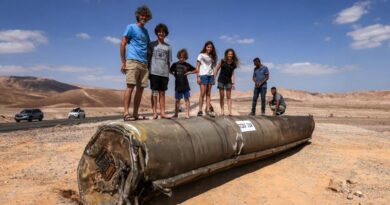As a Greenland Investor, Here Are 3 Ways to Position It as America’s Next Frontier

When President Trump introduced the idea of purchasing Greenland in 2020, he faced widespread ridicule.
The Danish prime minister labeled it “absurd,” while a former Danish leader referred to it as an “April Fool’s Day joke.” Mainstream media ridiculed it as a punchline.
Yet again, the naysayers were mistaken, and their limited perspective has been unveiled.
Trump’s vision for Greenland was never nonsensical — it was, in fact, strategic.
In the complex landscape of global influence, geography plays a crucial role. The Arctic, once considered a mere frozen expanse, has become the center of strategic rivalry and collaboration.
At the core is Greenland — the largest island globally, brimming with untapped resources and crucial geopolitical importance.
For Greenland to realize its dream of independence, it must fortify its economy and defense. The United States can play a pivotal role.
I have collaborated closely with Greenland’s business and political leaders for years to identify strategic investments, even as the Biden administration has, predictably, overlooked and undervalued these vast opportunities.
Hidden beneath its icy surface is a wealth of rare earth elements vital for AI, advanced weaponry, and contemporary technology.
As the ice melts, new shipping lanes are forming, transforming global trade and security dynamics.
Moreover, Greenland sits at the center of great-power competition and possesses significant human and natural potential, presenting an excellent opportunity for a strategic partnership.
Since the 2009 Self-Government Act, Greenland has gained increasing autonomy from Denmark’s long-standing sovereignty, including the ability to lease land independently.
A referendum on complete independence could occur at any moment, which means the United States has a limited timeframe to strengthen its ties before other nations assert their interests.
All available indicators suggest that the Trump administration can successfully negotiate with Greenland’s government to enhance both our economic and national security while also supporting theirs.
There are multiple viable pathways to advance this objective — each safeguarding American interests while respecting the aspirations of the Inuit people of Greenland.
One option is to fully utilize the 1951 Defense of Greenland Agreement, which grants the US exclusive oversight over defense installations and personnel in Greenland under NATO frameworks. In return, the United States committed to protecting Greenland during the Cold War — a promise fulfilled given Denmark’s limited defense capabilities.
This agreement empowers the US to negotiate long-term leases on critical lands, including those with rare-earth deposits, deep-water ports, or potential military bases.
Expanding such leases, like the one currently in effect for the US-operated Pituffik Space Base, could generate immediate economic benefits through infrastructure development and job creation. Over time, as trust builds, this arrangement could eventually align Greenland’s sovereignty more closely with America.
Another avenue is instituting a Compact of Free Association (COFA), similar to US agreements with the Pacific nations of Palau, Micronesia, and the Marshall Islands.
A COFA with Greenland would maintain its self-governance while offering US defense assurances, financial assistance, and expanded trade opportunities. This would enhance Greenland’s autonomy while securing a strategic foothold for the US in the Arctic, complemented by Alaska.
Additionally, the US could initiate a trilateral agreement with Greenland and Denmark to formalize Arctic cooperation.
This would facilitate mutual benefits for Denmark, allowing collaboration with the US on vital energy and rare-earth processing initiatives, thereby bolstering regional stability.
For Greenland, a strengthened partnership with the United States holds transformative possibilities.
American investment could diversify its economy, generate jobs, and modernize infrastructure, ultimately improving living standards across the island.
Educational and technological exchanges would empower Greenlanders to shape their own future — one founded on independence and prosperity.
Importantly, a strong alliance with the United States would protect Greenland’s sovereignty, shielding it from undue influences by China and other foreign entities.
Conversely, the stakes for the United States are equally considerable.
A more pronounced US presence in Greenland would mitigate adversarial militarization of the Arctic, prevent economic encroachment by competitors, and secure vital rare-earth resources — reducing US dependency on fragile supply chains currently dominated by China.
From a military perspective, Greenland serves as a complement to Alaska. Their strategic positions on either side of the continent create a vital connection, providing essential forward operating bases for security in the Arctic, North Atlantic, and North Pacific regions.
When President Harry Truman proposed acquiring Greenland in 1946, the idea was dismissed as unrealistic. Today, the situation is more pressing, and the opportunity is even greater.
To truly appreciate Greenland is to recognize it as more than just a strategic asset: It represents America’s next frontier.
By acting with foresight and determination, Trump can secure America’s leadership in the Arctic for generations, while assisting Greenland in achieving its aspirations as a partner, an ally, and potentially, one day, a part of the American family.
Ronald S. Lauder is the president of the World Jewish Congress and a former US Ambassador to Austria.



